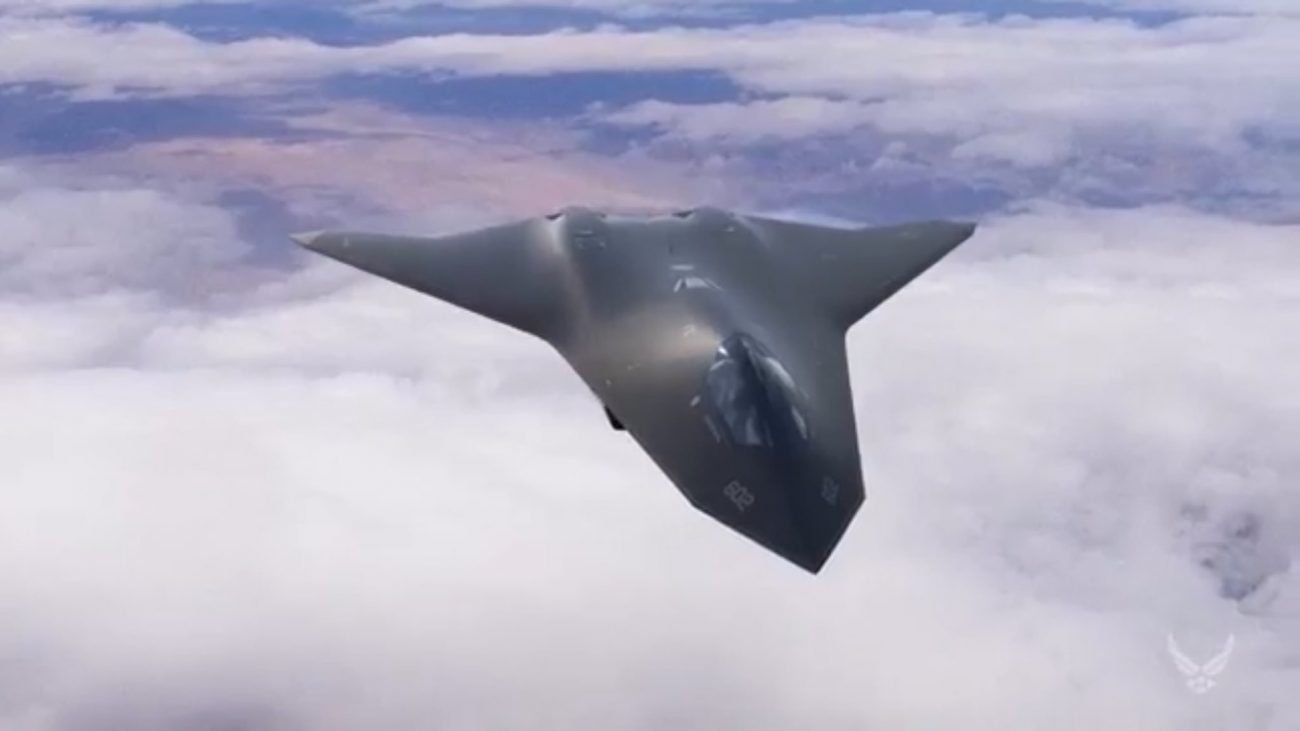The US Air Force (USAF), on August 19, awarded contracts worth around $4.9 billion to five companies for the prototype development of an adaptive engine for the service’s sixth-generation fighter jet, also called NGAD.
The USAF awarded General Electric (GE) Aviation, Pratt & Whitney (P&W), Boeing, Lockheed Martin, and Northrop Grumman, each an indefinite-delivery, indefinite-quantity contract with a ceiling of $975 million for the prototyping phase of the Next Generation Adaptive Propulsion (NGAP) program.
According to the Pentagon’s daily contracting announcement, work on these prototype engines, which will include designing, analysis, rig testing, prototype engine testing, and weapon system integration, is expected to be complete by July 2032.
Adaptive Propulsion
‘Adaptive Propulsion’ is a novel concept that combines the fuel economy of engines in commercial airliners with the high speed of fighter engines by introducing a third stream of air.
The conventional turbofan jet engines, like the F135 of the F-35 Joint Strike Fighter or the F119 of the F-22 Raptor, use two streams of air with one stream flowing through the core of the engine, while the other called the ‘bypass air’ flowing around the engine.
The adaptive engines have a third stream of air that can be adjusted during the flight to deliver additional thrust for combat situations or higher fuel efficiency during the cruise, offering the aircraft increased range and better thermal management and reducing tanker requirements during missions.
Of the five companies that have been awarded contracts to build prototypes under the NGAP program, only GE Aviation and Raytheon Technologies-owned P&W are currently fighter jet engine producers and happen to be the two primary suppliers of engines for American fighter jets.
Therefore, the addition of Boeing, Lockheed Martin, and Northrop Grumman suggests the USAF is interested in broadening the field to new potential engine suppliers.

Also, GE Aviation and P&W have already been developing engines under the USAF’s Adaptive Engine Transition Program (ATEP) aimed at replacing the existing F135 engine of the fifth-generation F-35 fighter.
In the past, the USAF had disclosed that the NGAP and AETP programs are directly linked to each other, meaning GE Aviation and P&W already have a head start in this new technology.
Adaptive Engine For The F-35 Fighter
Both GE Aviation and P&W have developed competing AETP prototypes, known as the XA100 and XA101, respectively, that have reportedly demonstrated a 25 percent gain in fuel efficiency, a 30 percent increase in range, and twice the power and thermal management capability as compared to existing military propulsion systems.
At present, the F-35A has an unrefuelled range of around 2173 kilometers, which is expected to increase to around 2897 kilometers with the new adaptive engine technology. Apart from that, the new engine would also improve the acceleration of the aircraft.
There is also an alternative, which involves a series of upgrades to the existing P&W F135 engine under the Enhanced Engine Program that would probably be based on technology developed under the AETP program but not require a complete replacement.
These upgrades offer a more than 10% increase in thrust and range and provide a more than 50% improvement in thermal capacity, according to P&W.
The companies have different viewse on whether an adaptive engine is appropriate for the F-35. GE Aviation argues that its XA100 engine will remarkably improve the F-35’s speed, range and heat management, giving it the ability to handle more advanced systems.
Read More
Whereas P&W, while standing by its work on the XA101 engine, says that it would be a mistake to install an entirely new engine in a single-engine fighter.
According to P&W, if the new adaptive engine on the single-engine F-35 was to fail mid-air, that would endanger the aircraft and the pilot flying it.
Also, if a problem in the engine is discovered on the ground, it could sideline a crucial portion of the USAF’s fighter fleet until the issue is fixed, impairing combat readiness, warned the company officials.
USAF May Choose Adaptive Engines For The F-35
The USAF is expected to make the final choice between the two engine modernization options by next year.
From recent reports, the service appears inclined to go with the AETP program because of the concerns related to the potential collapse of the advanced propulsion industrial base in the US.
The head of the USAF’s Propulsion Directorate, John Sneden, told reporters at a press briefing earlier this month that if the service chooses not to move forward with the AETP option, it could have significant implications for the already “very thin” industrial base.
“A portion of the industrial base would begin to collapse,” Sneden told reporters during a briefing at the Air Force’s Life Cycle Industry Day conference in Dayton, Ohio, on August 11.
“If we end up with one vendor there, if we don’t move forward with AETP, that vendor can actually get us into a place where we have, essentially, a reduced advanced propulsion industrial base.”
Apart from the concerns relating to the industrial base, Sneden also said that the AETP is the best option to support the planned upgrades to the F-35 – Block 4 upgrades which will include advanced electronic warfare capabilities, improved target recognition, and the ability to carry more missiles, among other features.
These upgrades will need more power from the propulsion system and will also make the fighter run hotter, requiring greater cooling capabilities.
That said, the costs of integrating a new engine with the F-35 could prove too high. USAF Secretary Frank Kendall told US lawmakers in April that he expected the developing and transitioning of AETP to production could cost $6 billion.
Meanwhile, the Enhanced Engine Program, which the P&W is lobbying for, would cost about one-third of AETP’s development price and may save up to $40 billion in lifecycle expenses, per the company’s estimates.
- Contact the author at tanmaykadam700@gmail.com
- Follow EurAsian Times on Google News